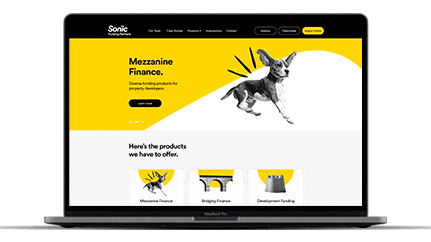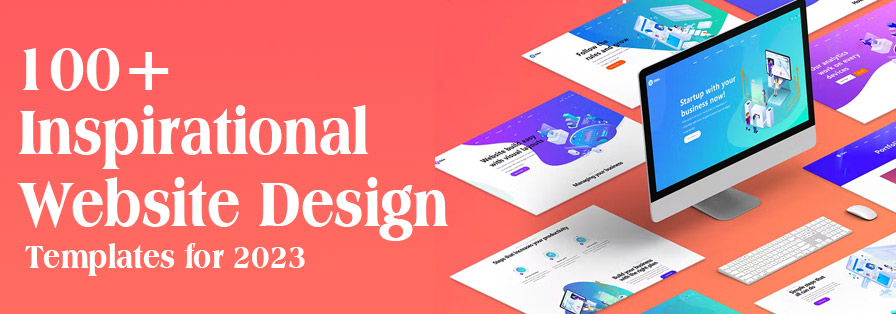
Crafting a User-Friendly Experience: Essential Components of Reliable Website Design
In the realm of site style, the relevance of crafting an user-friendly experience can not be overstated. Important aspects such as a clear navigation structure, responsive design principles, and fast loading times act as the foundation for involving individuals successfully. An instinctive customer interface combined with easily accessible material guidelines ensures that all people, no matter of capability, can navigate with ease. In spite of these fundamental principles, numerous sites still falter in providing this smooth experience. Recognizing the hidden aspects that add to effective layout can drop light on how to boost user contentment and involvement.
Clear Navigation Framework
A clear navigating framework is essential to effective website style, as it directly influences customer experience and interaction. Customers must be able to find information easily, as instinctive navigation minimizes frustration and motivates exploration. A well-organized design permits site visitors to understand the connection in between various web pages and material, causing longer website gos to and boosted communication.
To achieve clarity, designers ought to utilize acquainted patterns, such as leading or side navigating bars, dropdown food selections, and breadcrumb routes. These elements not only improve functionality however also offer a sense of orientation within the site. In addition, keeping a consistent navigation structure across all pages is important; this knowledge aids customers expect where to discover wanted details.
It is likewise essential to limit the variety of food selection things to avoid overwhelming individuals. Focusing on one of the most vital sections and using clear labeling will assist site visitors efficiently. Furthermore, integrating search capability can even more assist users in situating certain material quickly (website design). In summary, a clear navigating structure is not merely a design selection; it is a critical aspect that dramatically affects the overall success of a website by cultivating a effective and pleasurable customer experience.
Responsive Layout Principles
Efficient website navigation establishes the stage for a seamless individual experience, which comes to be a lot more crucial in the context of receptive layout principles. Receptive layout ensures that web sites adapt fluidly to various display sizes and alignments, enhancing availability across devices. This versatility is attained via versatile grid formats, scalable images, and media inquiries that permit CSS to adjust styles based upon the tool's characteristics.
Secret principles of receptive style include liquid formats that utilize percents instead of repaired systems, making certain that components resize proportionately. Additionally, employing breakpoints in CSS enables the design to transition smoothly between various tool dimensions, optimizing the layout for each display type. The use of receptive photos is also necessary; images should automatically adapt to fit the screen without losing quality or causing design shifts.
Moreover, touch-friendly interfaces are essential for mobile users, with sufficiently sized buttons and intuitive gestures improving customer communication. By incorporating these principles, designers can develop internet sites that not only look aesthetically pleasing but additionally supply interesting and practical experiences across all devices. Inevitably, efficient responsive layout promotes customer fulfillment, minimizes bounce prices, and encourages longer engagement with the web content.
Quick Loading Times
While users increasingly anticipate sites to pack swiftly, fast filling times are not just an issue of benefit; they are important for retaining site visitors and improving total individual experience. Research suggests that customers normally abandon web sites that take longer than three secs to load. This abandonment can lead to boosted bounce rates and lowered conversions, ultimately damaging a brand name's credibility and revenue.
Quick filling times enhance individual involvement and contentment, as visitors are most likely to check out a website that responds quickly to their communications. Additionally, online search engine like Google focus on speed in their ranking formulas, meaning that a slow site might have a hard time to attain visibility in search results.

User-friendly Individual Interface
Fast loading times lay the foundation for an interesting online experience, yet they are just part of the equation. An instinctive interface (UI) is necessary to make sure visitors can browse a web site effortlessly. A properly designed UI permits individuals to achieve their purposes with very little cognitive load, cultivating a smooth interaction with the website.
Secret elements of an instinctive UI consist of consistent format, clear navigation, and recognizable symbols. Consistency in layout aspects-- such as color design, typography, and switch designs-- assists users recognize exactly how to connect with the web site. Clear navigation this hyperlink frameworks, including sensible menus and breadcrumb routes, allow users to discover information swiftly, minimizing irritation and improving retention.
In addition, comments devices, such as hover effects and filling indicators, notify customers regarding their activities and the website's action. This transparency grows count on and motivates ongoing interaction. Furthermore, focusing on mobile responsiveness ensures that individuals enjoy a natural experience throughout gadgets, satisfying the varied means audiences gain access to web content.
Easily Accessible Web Content Standards

First, utilize straightforward and clear language, avoiding lingo that might puzzle visitors. Highlight correct heading frameworks, which not only aid in navigation but also aid display readers in interpreting material power structures effectively. Additionally, give different message for images to convey their definition to individuals who depend on assistive modern technologies.
Comparison is another critical aspect; guarantee that message sticks out against the history to enhance readability. Moreover, make sure that video and audio web content includes inscriptions and transcripts, making multimedia accessible to those with hearing disabilities.
Finally, include key-board navigability into your design, enabling individuals that can not utilize a computer mouse to access all website features (website design). By adhering to these obtainable content standards, internet designers can produce comprehensive experiences that cater to the requirements of all customers, eventually improving customer engagement and satisfaction
Conclusion
To conclude, the combination of crucial components such as a clear navigation structure, responsive design principles, fast loading times, an user-friendly individual interface, and obtainable web content standards is essential for creating an user-friendly site experience. These components collectively enhance usability and interaction, guaranteeing that individuals can easily browse and engage with the site. Prioritizing these design components he has a good point not just enhances general fulfillment however also fosters inclusivity, suiting varied individual requirements and preferences in the electronic landscape.
A clear navigating framework is essential to effective website layout, as it directly affects customer experience and engagement. In summary, a clear navigation structure is not merely a layout option; it is a calculated element that considerably impacts the total success of an internet site by promoting a delightful and effective user experience.
In addition, touch-friendly interfaces are essential for mobile users, with adequately sized switches and intuitive motions improving customer interaction.While users significantly expect sites to pack quickly, quickly loading times are not just a matter of convenience; they are important for retaining site visitors and boosting general customer experience. learn the facts here now website design.In final thought, the assimilation of vital elements such as a clear navigation framework, responsive style concepts, fast packing times, an intuitive individual interface, and accessible material standards is vital for producing an user-friendly web site experience
Comments on “Future-Proof Your Organization with Ingenious Website Design Trends”